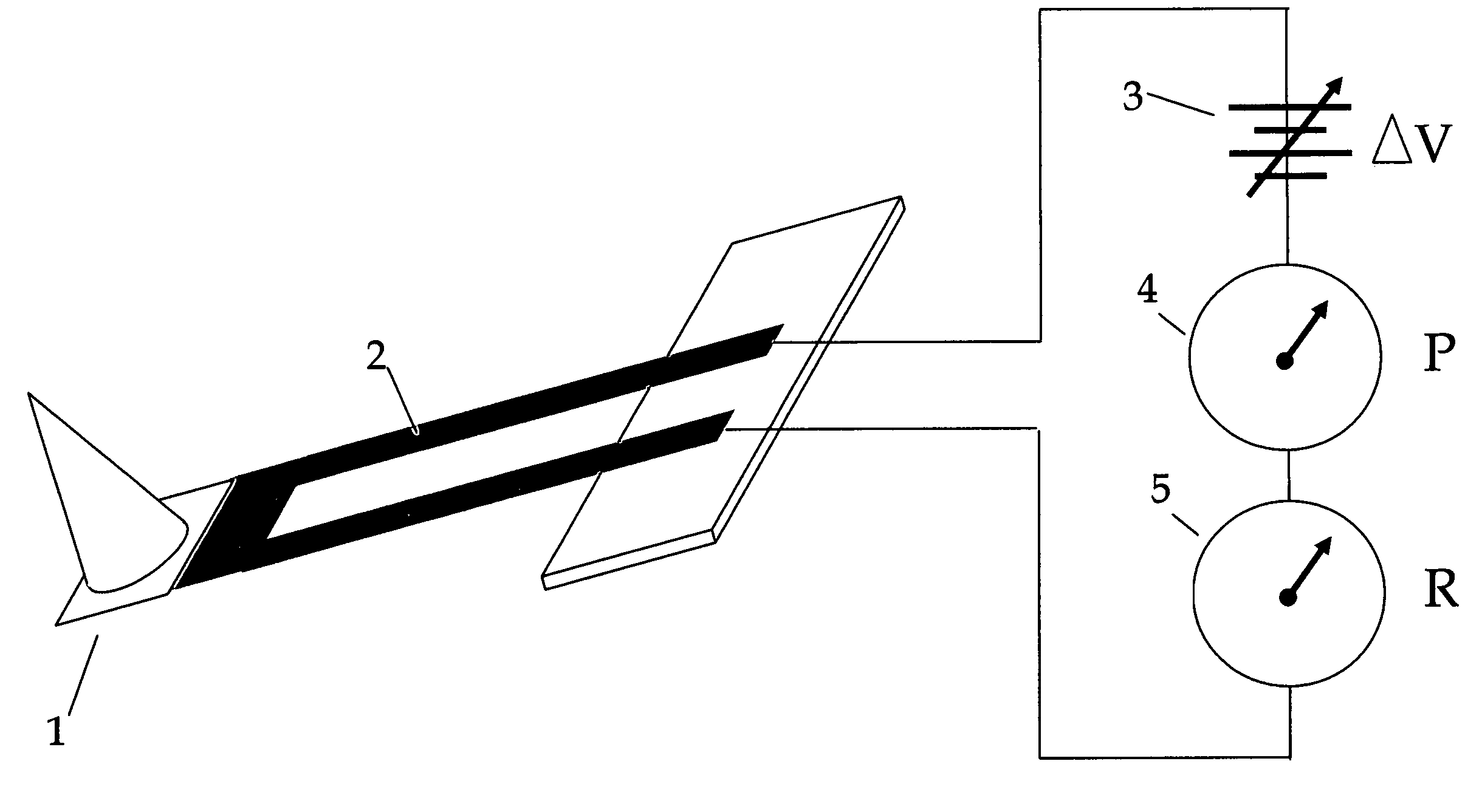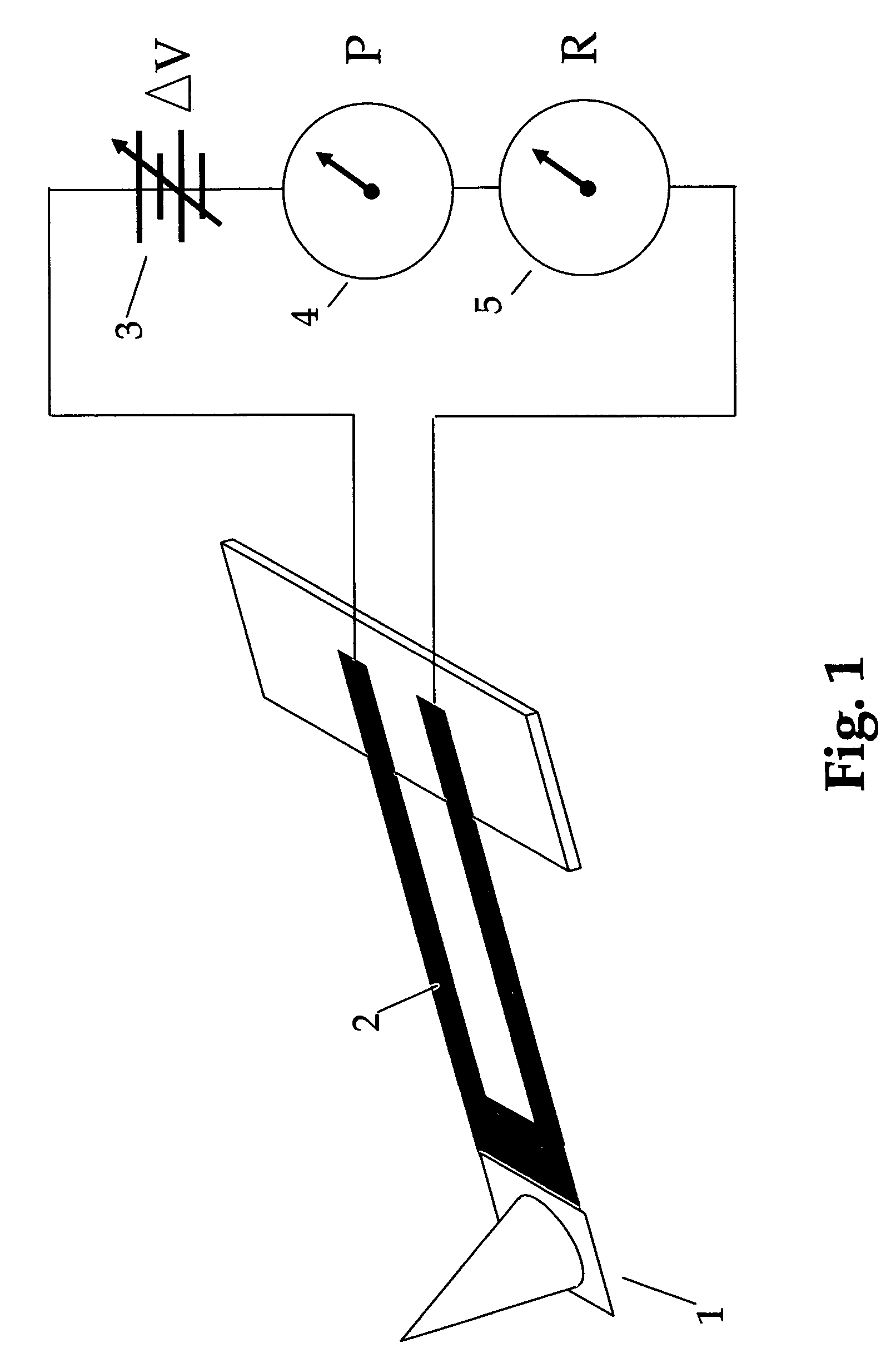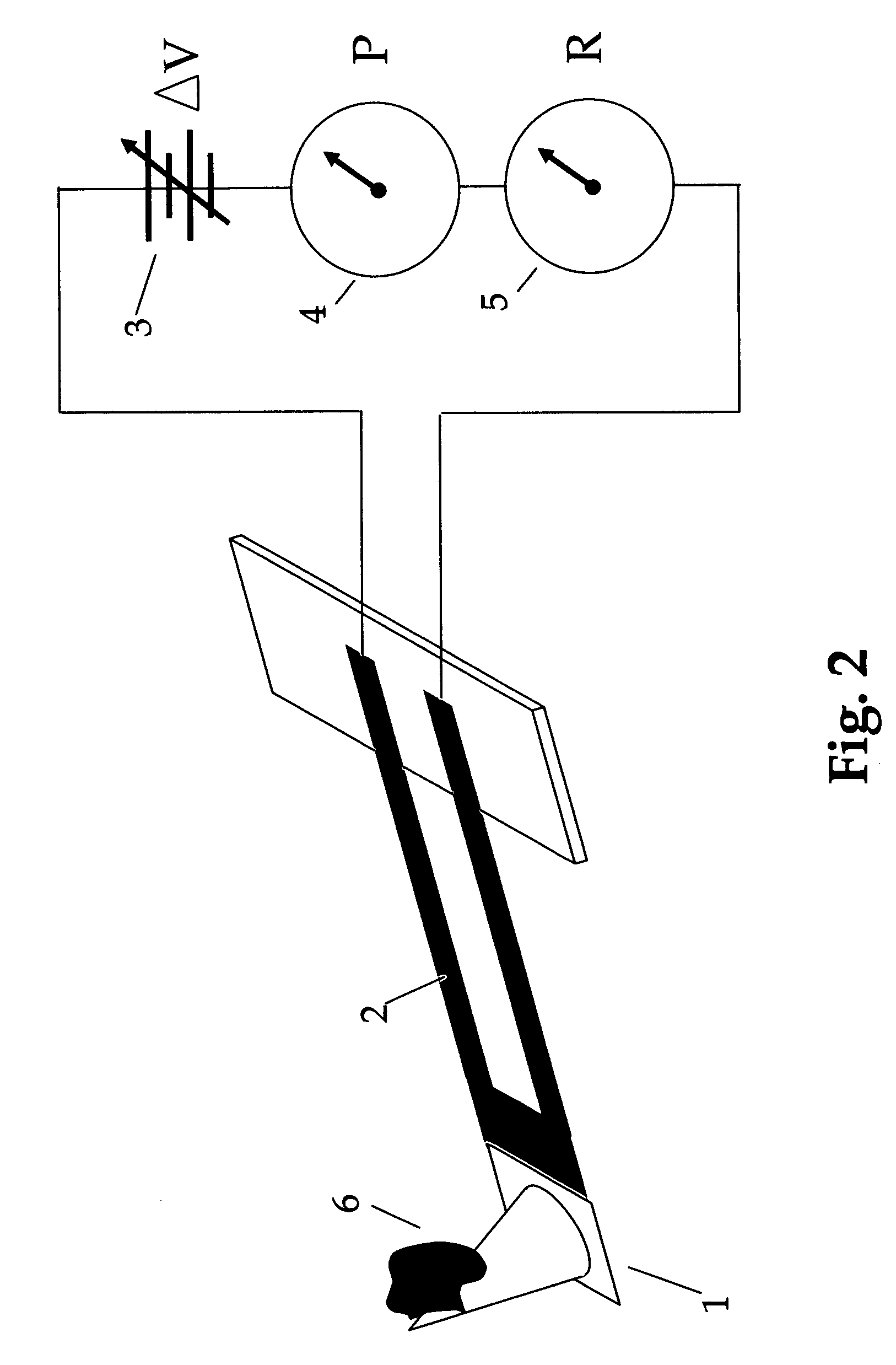Quantitative calorimetry signal for sub-micron scale thermal analysis
a calorimetry signal and sub-micron scale technology, applied in the field of quantitative calorimetry for high-resolution thermal analysis, can solve the problems of lack of quantitative information, high localized surface effects, and inability to quantitatively measure the enthalpies of sthm techniques as practiced currently
- Summary
- Abstract
- Description
- Claims
- Application Information
AI Technical Summary
Benefits of technology
Problems solved by technology
Method used
Image
Examples
Embodiment Construction
[0020]It is assumed that one skilled in the art is familiar with the operation of a scanning probe microscope, and in particular, an atomic force microscope with a cantilever type probe. Such a microscope is the foundation for SThM. In the following description concepts such as scanning, imaging, and probe-sample interaction will be used with meanings known in the field of scanning probe microscopy, and only features pertinent to the novel techniques of the invention will be described in detail. It is also understood that most SPM's include a programmable control system allowing for a wide range of scanning, probe positioning, and deflection measurements which may be optimized for a particular application.
[0021]FIG. 1 shows a cantilever probe at 1. Only the probe is shown, and the scanning, deflection detection and other functional parts of the SThM are assumed. The probe has a heating resistive element 2. The probe with heater may be a bent wire type of probe known in the thermal m...
PUM
| Property | Measurement | Unit |
|---|---|---|
| resistance | aaaaa | aaaaa |
| probe resistance | aaaaa | aaaaa |
| temperature | aaaaa | aaaaa |
Abstract
Description
Claims
Application Information
 Login to View More
Login to View More - R&D
- Intellectual Property
- Life Sciences
- Materials
- Tech Scout
- Unparalleled Data Quality
- Higher Quality Content
- 60% Fewer Hallucinations
Browse by: Latest US Patents, China's latest patents, Technical Efficacy Thesaurus, Application Domain, Technology Topic, Popular Technical Reports.
© 2025 PatSnap. All rights reserved.Legal|Privacy policy|Modern Slavery Act Transparency Statement|Sitemap|About US| Contact US: help@patsnap.com



